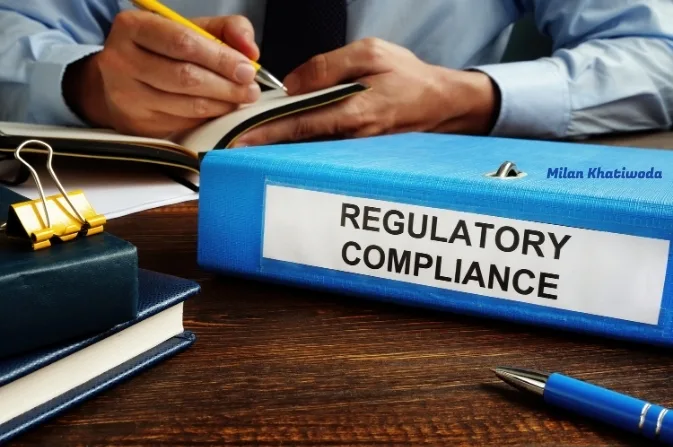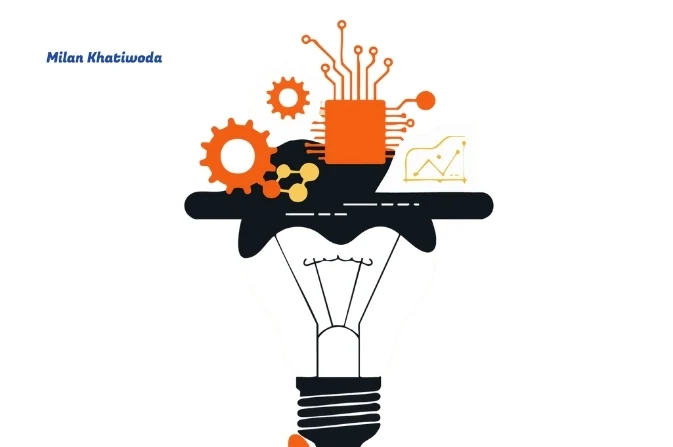Top Challenges SMEs Face in Nepal & How to Overcome Them?
Small and Medium Enterprises (SMEs) are the heartbeat of Nepal’s economy. They contribute about 22% of GDP and employ nearly 1.8 million people. Despite their importance, many SMEs face hurdles that slow growth and limit their potential.
Small and Medium Enterprises (SMEs) face numerous challenges in Nepal, including financial constraints, regulatory hurdles, and limited market access. Understanding these small business issues in Nepal is important for developing effective SME growth strategies and SME solutions Nepal that help businesses thrive.
In 2025, as Nepal navigates post-COVID recovery, political shifts, and global market changes, these businesses need strategies beyond survival and solutions for sustainable growth.
This article covers the top challenges SMEs face in Nepal and offers proven strategies to overcome financial constraints to technological adoption needed to succeed in today’s competitive market.
1. Access to Finance
Getting the right funding is one of the biggest challenges for Nepalese SMEs. Banks often view small businesses as high-risk investments, leaving owners struggling to expand or innovate. It affects nearly 78% of small businesses according to recent Nepal Rastra Bank reports.
Challenges
Many SMEs struggle with managing working capital and maintaining healthy cash flow, which are critical for day-to-day operations. Additionally, collateral requirements often prevent startups from securing necessary loans, limiting their ability to invest in growth
Solutions
- Microfinance programs: Use local cooperatives and microfinance banks that specialize in small loans.
- Government credit schemes: Nepal Rastra Bank offers SME schemes, as the SME Development Bank offers loans at lower interest rates of 6-8%. Since 2023, over 15,000 SMEs have benefited.
- Financial literacy: Attend SME loan advisory sessions offered by chambers of commerce. It helps in financial documentation and business planning significantly.
Consultant’s Note: SMEs that carefully plan loan applications and understand government schemes can access funding faster and avoid unnecessary rejection.
2. Regulatory Hurdles

SMEs face bureaucratic red tape that makes legal operations challenging and time-consuming. From licenses to tax compliance, bureaucracy slows down SMEs.
Many entrepreneurs spend months just to get registered. Navigating government rules and policies creates significant barriers for SMEs in Nepal. Regulatory complexities slow business setup and create uncertainty that hampers growth planning.
Challenges
- Licensing and registration processes is complicated for small business. On average, SME spends 45 days and visits 8 different offices to complete registration, according to Department of Industry data.
- Tax compliance difficulties overwhelm small business owners. Frequent policy changes and difficult paperwork cause many to make mistakes and face penalties.
- Unclear regulations cause delays and increase legal risks. Many entrepreneurs worry about breaking rules because the regulations are confusing.
Solutions
- New Online government policies, the SME Policy 2024, reduced registration time to 15 days for qualified businesses. It is handled through online portals.
- The Nepal Bar Association provides affordable legal guidance. SMEs can access expert advice for just NPR 5,000-15,000 monthly retainer fees.
- Digital/Online platforms for registration and tax filing have made the following rules much easier. The IRD's online system handles 85% of SME tax filings within 48 hours, dramatically reducing administrative burden.
Recommended Read: How to Choose the Right Business Consultant in Nepal?
3. Market Access & Competition
Small businesses in Nepal face big challenges in growing their markets because there is a lot of competition and few ways to distribute their products. This makes it hard for them to increase sales and grow.
The government’s export promotion programs play a key role in helping SMEs enter international markets. The Trade and Export Promotion Centre (TEPC) supports handicrafts SMEs by connecting them with global buyers, while tourism SMEs benefit from targeted marketing campaigns to attract foreign visitors. Manufacturing SMEs also gain from export facilitation services that simplify customs and logistics.
Many Nepalese SMEs find it difficult to compete with large local companies and imported goods. Selling products in international markets is also tough because of complicated shipping and transport problems.
The government’s export promotion programs play a key role in helping SMEs enter international markets. The Trade and Export Promotion Centre (TEPC) supports handicrafts SMEs by connecting them with global buyers, while tourism SMEs benefit from targeted marketing campaigns to attract foreign visitors. Manufacturing SMEs also gain from export facilitation services that simplify customs and logistics.
Many Nepalese SMEs find it difficult to compete with large local companies and imported goods. Selling products in international markets is also tough because of complicated shipping and transport problems.
Challenges
- International market entry remains difficult for SMEs lacking export experience. Only 12% of Nepali SMEs successfully export products, compared to 45% in comparable economies.
- Domestic competition from larger firms and imported goods creates pricing pressure. Established companies often undercut SME pricing through economies of scale.
- Logistic barriers restrict market expansion, especially for rural SMEs. Poor transportation infrastructure increases delivery costs by 25-40% compared to urban areas.
Solutions
- E-commerce platforms(Daraz, Sastodeal) and digital marketing help to reach wider audiences.
- Trade fair participation through government export promotion programs helps SMEs connect with international buyers. The Nepal Trade Integration Strategy has facilitated over NPR 2 billion in new export contracts.
- Strategic partnerships with distributors expand reach efficiently. SMEs forming distribution alliances report 60% faster market penetration compared to independent efforts.
Recommended Read: What is a Business Consultant?
4. Skilled Workforce & Human Capital

In many industries, a shortage of skilled workers restricts firm growth potential and impacts productivity.
Challenges
- Lack of skilled manpower in technology, manufacturing, and services hinders the growth of SMEs. A 2024 survey found 68% of SMEs struggle with digital skills.
- No growth opportunities, that’s why employees leave. Small businesses lose about 35% of their staff each year, which costs more money to hire again.
- There is a lack of practical knowledge for graduates in schools and colleges, so companies must spend extra time training them.
Solutions
- Vocational training programs like CTEVT provide the skill gap that SMEs need.
- Employee retention strategies, including profit-sharing and skill development opportunities, reduce turnover by up to 50%.
- University collaborations create internship and training programs. SMEs partnering with technical institutes report 45% better hiring success rates and improved employee satisfaction.
5. Technological Adoption & Digital Transformation
Many small businesses avoid new technology and instead rely on outdated technologies. As a result, they become inefficient and struggle to compete in today's economy.
Challenges
- Outdated systems make work slower and it is less efficient. Manual work that could be done by machines adds extra costs and mistakes.
- Limited digital knowledge among SME owners and employees hinders technology adoption. Only 25% of SME owners feel confident using advanced business software.
- Small businesses don’t spend much on technology because they either don’t have enough money or don’t understand how digital tools help.
Solutions
- Affordable cloud-based tools make advanced technology accessible. Platforms like Google Workspace and Microsoft 365 provide enterprise-level capabilities at SME-friendly prices.
- Digital skills training programs supported by FNCCI have helped over 10,000 SME employees gain essential technology competencies.
- Government incentives for digital transformation include tax deductions up to NPR 500,000 for qualifying technology investments under the Digital Nepal Framework.
Consultant’s Note: In my experience working with SMEs in Nepal, businesses that adopted ERP early cut operational costs by 15–20%. Start small with affordable cloud tools before scaling.
Recommended Read: Business Idea in Nepal
6. Infrastructure & Operational Challenges
Lack of good transport, electricity, and logistics makes it hard and costly for small businesses to run smoothly across the country.
Challenges
- Frequent power outages disturb operations and damage equipment. Many clients report 15-20% productivity losses due to an unreliable electricity supply. Backup power solutions become essential investments.
- Poor roads and transportation networks increase logistics costs. People in rural areas pay about 40% more for transport than those in cities, which hurts their profits and ability to compete.
- Rural-urban connectivity gaps limit market access for businesses far from towns. Delays in supply delivery and weak internet create tough problems that need smart fixes.
Solutions
- Public-private partnerships help in infrastructure development. Recent collaboration between the government and the private sector has improved road connectivity to 15 industrial zones.
- Rural industrial zones with improved facilities attract SME investment. The government's plan to establish 20 new industrial parks by 2026 promises better infrastructure access.
- Business incubators provide shared facilities and services. Incubation centers in major cities offer affordable workspace, utilities, and support services to growing SMEs.
Recommended Read: How can FDI impact Business Growth in Nepal?
7. Innovation & Entrepreneurship Challenges

SMEs often struggle to innovate due to a risk-averse culture and limited research and development resources.
Challenges
- Minimal Research & Development budgets limit product development and process improvement. On average SME R&D investment remains below 1% of revenue, compared to big economies.
- Fear of failure holds businesses back from trying new things or growing. A cautious culture makes it harder to take smart risks that could lead to innovation.
- Weak innovation networks limit knowledge sharing and collaboration. Without mentors and peers to guide them, businesses slow down when adopting new innovations
The World Bank’s 2024 report says helping SMEs innovate is key for the country’s economy to compete better
Solutions
- Innovation hubs provide collaborative environments and resources. Technology parks in Kathmandu and Pokhara offer R&D facilities, mentorship, and funding connections.
- Grant programs support research and development initiatives. The Innovation Fund provides up to NPR 2 million for qualifying SME projects with commercial potential.
- University partnerships facilitate knowledge transfer and research collaboration. SMEs working with academic institutions report 50% higher innovation success rates.
Consultant’s Note: In my experience, SMEs that adopt ERP and cloud tools early reduce operational costs by 15–20%. Start small and scale your tech investments gradually.
Recommended Read: What does a Business Consultant do?
8. Economic Impact & Post-COVID Recovery
Tourism SMEs receive fewer tourists and handcraft SMEs deal with disrupted supply chains during the COVID. SMEs had to adjust by diversifying their products and entering new export markets. Government support initiatives addressed sector-specific obstacles to aid recovery
SMEs are still recovering from financial losses caused by the pandemic.
Challenges
- Revenue declined by COVID during 2020-2022. Many businesses still operate below pre-pandemic levels and struggles with reduced customer demand.
- Sector-specific struggles impact tourism, hospitality, and manufacturing SMEs. These sectors face reduced international demand and supply chain disruptions.
- SMEs lack the resources to prepare for future economic shocks or market volatilities.
Solutions
- The government has special support programs to help small businesses. The Economic Recovery Plan gives NPR 15 billion to help the hardest-hit SME sectors.
- There are programs focused on farming, tourism, and manufacturing that offer help designed for each type of business. This support helps businesses adjust to changing market conditions.
- Using technology to build digital strength helps small businesses handle future problems better. Businesses with good digital tools did 40% better during the pandemic than others.
9. Recent Developments Impacting SMEs in Nepal
Policy changes, infrastructure upgrades, and financial reforms are creating new opportunities for SMEs.
Political Changes
- The government is working to fight corruption and create rules that help small businesses. New policies focus on being open and cutting red tape for SMEs.
- More stable and clear rules make it easier for businesses to plan for the future. Less political uncertainty helps small businesses feel safer about investing and growing.
Infrastructure Improvements
- Trade route restoration enhances commercial opportunities. Improved customs processing and border facilities reduce trade-related delays and costs.
- Digital infrastructure expansion reaches rural areas. If there is Improved internet connection, it enables e-commerce and digital service delivery for remote SMEs.
Financial Reforms
- Central bank initiatives encourage SME lending through directed credit programs. Banks must allocate a minimum percentage of their lending portfolio to the SME sector.
- Easier credit access through simplified documentation and faster approval processes. New policies reduce collateral requirements for qualified SME borrowers.
90% of SMEs in Nepal struggle with at least one of these challenges. Don’t wait until it slows your growth book a free consultation today and get a tailored SME growth strategy.
Facing challenges like limited market access, digital barriers, and financial constraints is common but they don’t have to hold you back. Our expert consultants will work closely with you to identify your unique obstacles and create a clear, actionable plan designed to unlock your business’s full potential.
Take the first step towards sustainable growth with Milan Khatiwoda and your success starts with the right strategy tailored just for your SME.
Leveraging Nepal’s Startup Ecosystem and Business Incubators for SME Growth

Business incubators and accelerators play a vital role in Nepal's growing startup ecosystem of SMEs. These incubators offer low-cost workspaces, mentorship, networking, and funding to help young enterprises overcome their initial obstacles.
Kathmandu's Innovation Hub and Pokhara's Tech Park demonstrate how startups and SMEs may effectively interact, create, and grow together.
Final Thoughts
SMEs in Nepal face a mix of challenges from limited finances and regulatory hurdles to technological gaps and workforce shortages. However, with the right strategies, these hurdles can be turned into growth opportunities.
Implementing effective SME solutions in Nepal such as accessing microfinance, adopting digital tools, and engaging with business incubators can transform challenges into opportunities.
SMEs that plan strategically and utilize available resources are best positioned for sustainable growth. Success for SMEs requires strategic planning, proactive decision-making, and smart use of resources. By embracing digital tools, leveraging government incentives, training employees, and expanding market access, small businesses can not only survive but thrive in Nepal’s competitive landscape.
Actionable Steps for SME Owners in Nepal:
Remember, small steps lead to big growth. Start with one actionable change this week, whether it’s digitizing payments, training staff, or applying for a loan—and set your SME on a path to sustainable success. Are you an SME owner in Nepal?
Start by reviewing your finances, workforce, and digital readiness. Take one action this week whether applying for a government loan, digitizing your payments, or training your staff. Small steps lead to big growth. Contact Now!!
SMEs that plan strategically and utilize available resources are best positioned for sustainable growth. Success for SMEs requires strategic planning, proactive decision-making, and smart use of resources. By embracing digital tools, leveraging government incentives, training employees, and expanding market access, small businesses can not only survive but thrive in Nepal’s competitive landscape.
Actionable Steps for SME Owners in Nepal:
- Assess your finances – Identify gaps and explore government-backed loans or microfinance options.
- Invest in workforce development – Provide training, upskill employees, and improve retention strategies.
- Adopt digital solutions – Implement online payments, e-commerce platforms, and cloud-based tools.
- Expand market reach – Participate in trade fairs, form partnerships, and explore new markets.
Remember, small steps lead to big growth. Start with one actionable change this week, whether it’s digitizing payments, training staff, or applying for a loan—and set your SME on a path to sustainable success. Are you an SME owner in Nepal?
Start by reviewing your finances, workforce, and digital readiness. Take one action this week whether applying for a government loan, digitizing your payments, or training your staff. Small steps lead to big growth. Contact Now!!
Frequently Asked Questions
The main challenges SMEs face in Nepal are limited access to finance, inadequate infrastructure, regulatory complexities, and a shortage of skilled labor. These challenges affect growth, profitability, and competitiveness in local and international markets.
SMEs can overcome financial barriers in Nepal by:
- Applying for government-backed SME loan schemes
- Partnering with microfinance institutions
- Seeking private investors or venture capital
- Improving financial documentation and planning
The regulatory hurdles faced bySMEs are complex licensing procedures, tax compliance challenges, and bureaucratic delays. These can increase operational costs and slow business growth. Digital registration portals and legal advisory services help simplify compliance.
SMEs can expand their market access and compete effectively by following these strategies:
- Digital marketing and e-commerce for wider reach
- Participating in trade fairs and exhibitions
- Forming strategic partnerships or cooperatives
- Improving product quality to meet local and international standards
Technology adoption is important for SMEs in Nepal for productivity, reduces costs, and allows SMEs to access wider markets. SMEs with digital transformation gain significant competitive advantages in Nepal's evolving economy.
SMEs can use the following strategies to overcome a skilled workforce:
- Invest in employee training
- Collaborate with vocational institutes
- Offer competitive incentives to attract and retain skilled workers
Yes, there are government programs supporting SMEs in Nepal. They are:
- SME Development Policy
- Financial subsidies and low-interest loans
- Capacity-building and training programs
SMEs can overcome challenges by:
- leveraging government loan schemes
- adopting digital tools
- improving financial literacy
- participating in training programs.
- Building strategic partnerships
- using business incubators
Nepal helps small businesses grow with many support programs. These include microfinance that gives small loans, government credit schemes with low-interest loans, easy-to-use online tools for tax and business paperwork, and business incubators that offer workspace, mentoring, and networking. These programs help small businesses get money, follow rules more easily, and use new technology so they can grow strong and last long.

